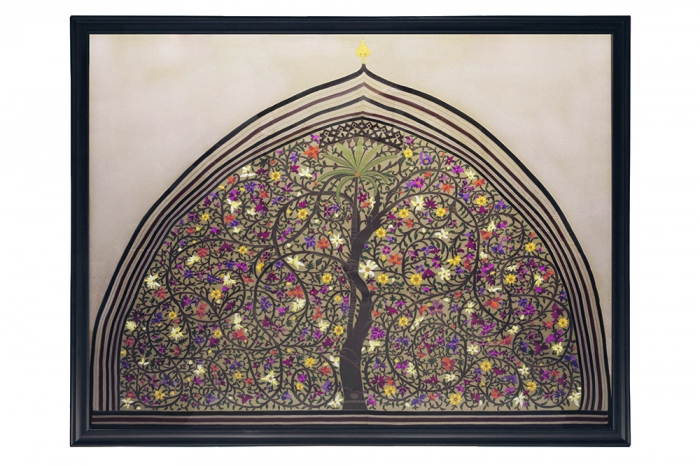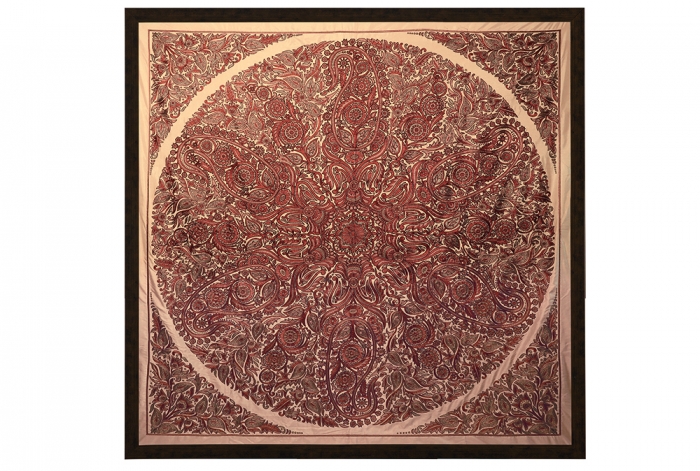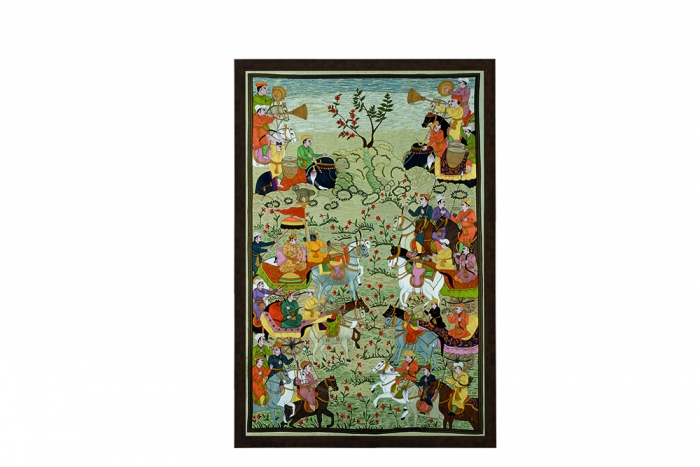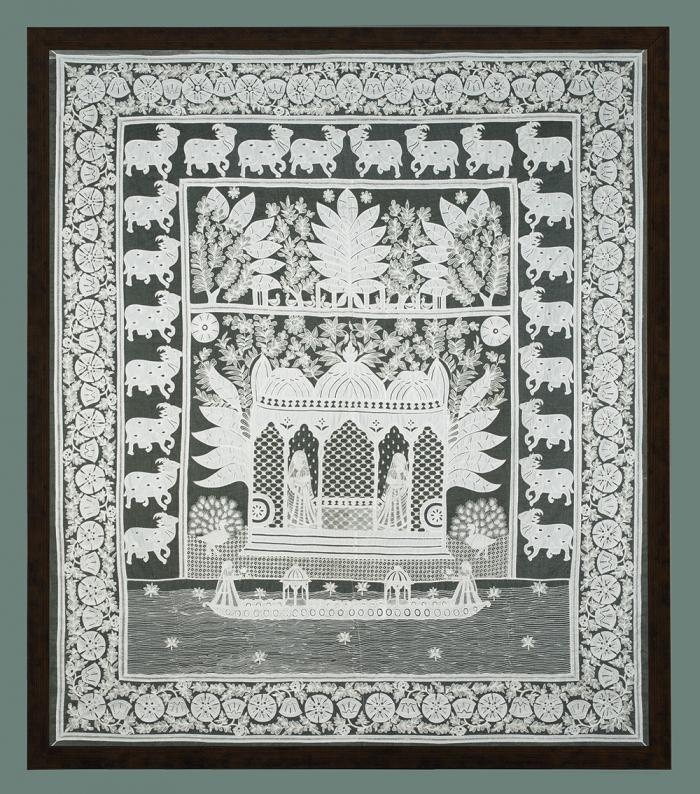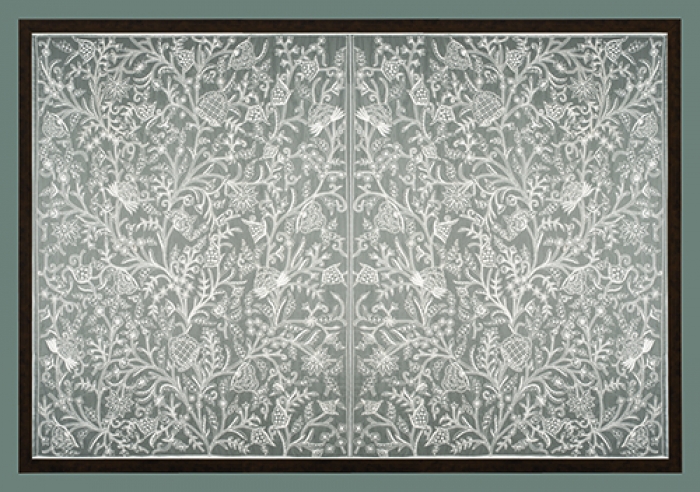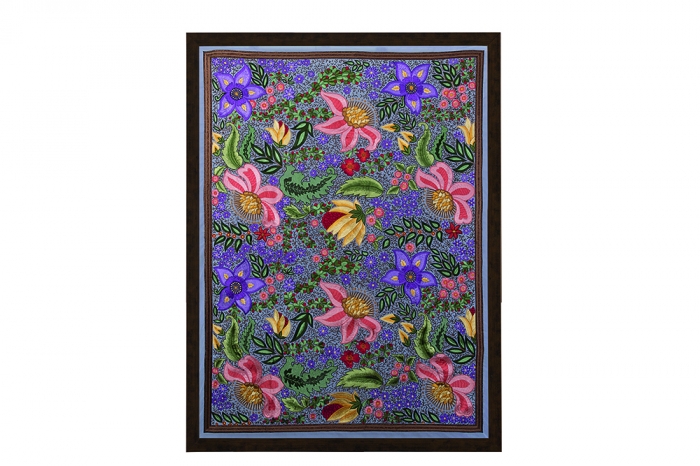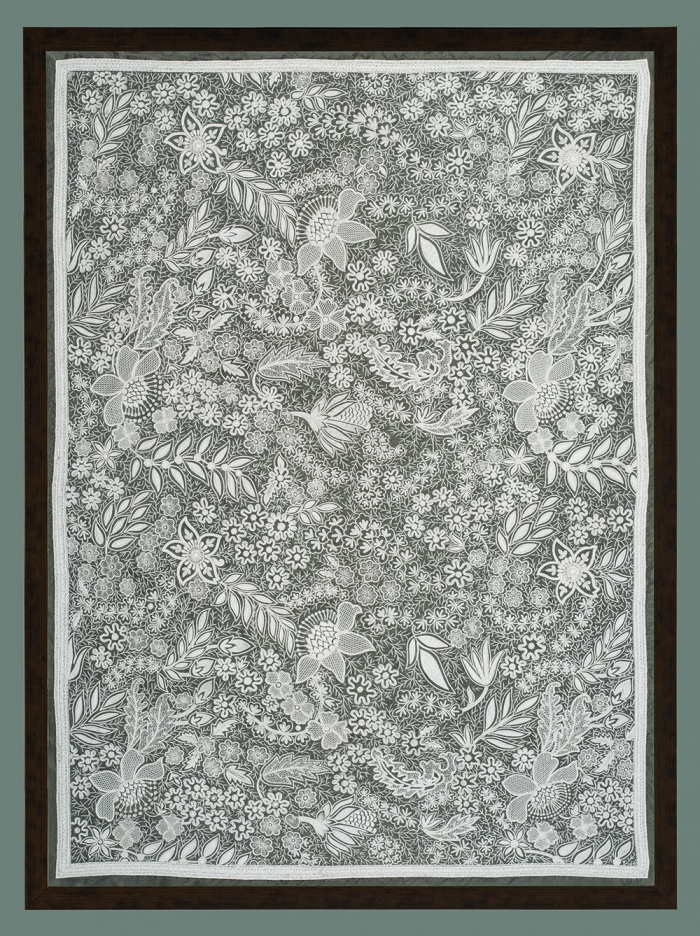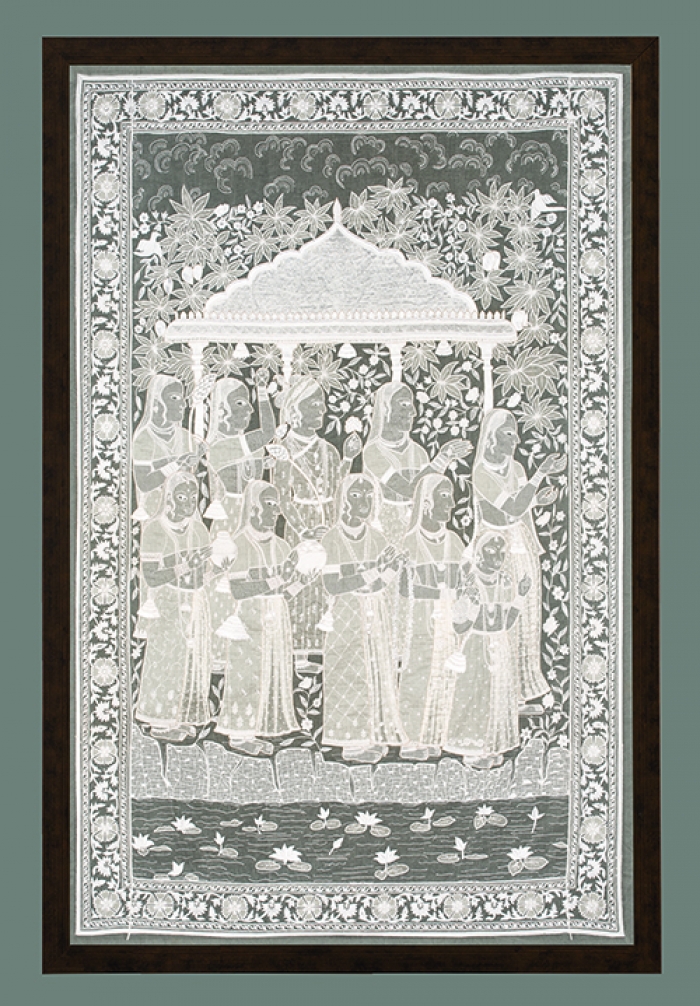EXPRESSIONS IN THREAD | A COLLECTION OF STORYTELLING TAPESTRIES
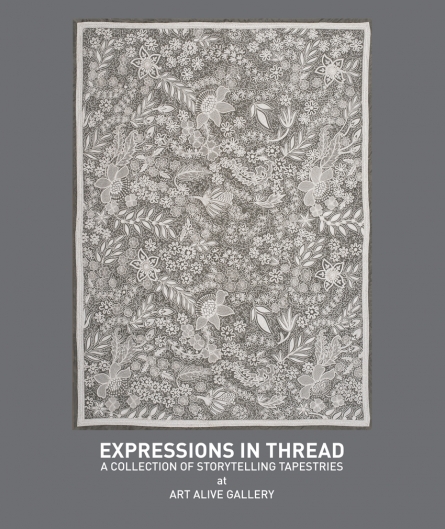
EXPRESSIONS IN THREAD | A COLLECTION OF STORYTELLING TAPESTRIES
Solo Booth
31st January 2019 - 3rd February 2019
NSIC EXHIBITION GROUNDS OKHLA, NEW DELHIView WorksArt Alive Gallery presents ‘EXPRESSIONS IN THREAD’ which showcases Collection of Storytelling Tapestries.
The inspiration behind every tapestry always begins from a deeply personal connect to the theme. In fact the first tapestry emerged from a deep desire to express “Shrinathji” is install it at Sneha Sheth’s home. The narrative for every tapestry flows from themes that only draw upon the unique aesthetic culture and design forms of traditional Indian art. but also recreate the art of visual story-telling.
Motifs are inspired by the classical designs from pichwai and miniature paintings, as well as from inlay works in marble. These hand embroidered artworks resurrect Indian heritage in both theme and craftsmanship, while reflecting a very personal and modern aesthetic.
PROCESS
Once a theme has been decided, then the hand-rendered design consisting of detailed line-drawings is drawn in multiple variations on sheets of translucent paper. The final selection is then remade from these variations to the required dimensions. This is a very critical stage because this is the visual framework on which the art form rests. Proportion and level of detail must create a balanced aesthetic. If this is not perfect, the intricacy of the embroidery techniques can neither mask nor compensate for the lack of balance of form. Therefore this process in itself takes a minimally of fifteen days, depending on the degree of detail and on the expected size of the tapestry. Tapestry sizes could be anywhere from 24” X 24” to 8 ft x 10 ft.
Once the drawing is completed, perforations are made by hand on the paper along the design lines. The fabric to be embroidered, usually a variation of strong silk, is selected and stretched out on large bed-size frames called “khats”. This design is transferred on fabric through these perforations using soluble chalk dust. Depending on the size of the tapestry, this process can take anywhere from three to five days. Now the fabric is ready to be embroidered. However before final embroidery begins , samples are made with different hues of threads and various types of embroidery techniques and stitches to see what best brings the design to life. Despite this, if the overall effect is not as expected then changes have to be made midway through the work.
A large-sized tapestry tends to need a minimum of two to four artisans, called “karigars”, depending on intricacy of both, the design and the embroidery techniques used. Even then, some pieces can take more than four months to make. All in all, because each piece is unique, it is difficult to predict how long a tapestry will take to reach completion. The size and texture of every stitch can change the visual impact of the tapestry, and portions may need to be redone if the effect is not satisfactory. To create a masterpiece, all elements of the tapestry, from the lines, the colours, the textures and the quality of craftsmanship, must harmonize.
The karigars are extremely talented and highly skilled artisans from places like West Bengal, Bihar, Uttar Pradesh and Nepal. This unique heritage was passed down from generation to generation and most have learnt their craft in childhood years. Unfortunately, lack of patronage and a fair means to quality livelihood, compels these artisans to migrate to cities like Mumbai. Most find employment in garment embroidery units in cities where they are paid rudimentary rates based upon the number of shifts they work, rather than on the quality of their work. Most of them live in the factories itself which convert to dormitories at night. It is essentially a hand-to-mouth existence. Each passing generation therefore chooses to eschew this trade and we find our heritage slipping away.
Fair pay, healthy and compassionate working conditions at our studio, and better quality of life, enables our craftsmen to revive and preserve our traditional arts by freely developing their talent, focussing on creating fine-quality work and continually honing their skills.
ABOUT THE ARTIST
The karigars whose works were showcased and praised, are now eager to challenge themselves and engage in a medium that allowed them to take their skills to new heights with each piece. The result of this mutual collaboration is “Expressions in Thread”, so named as their work is reminiscent of a fine painting, evoking very much the same aesthetic appeal and emotional response.

